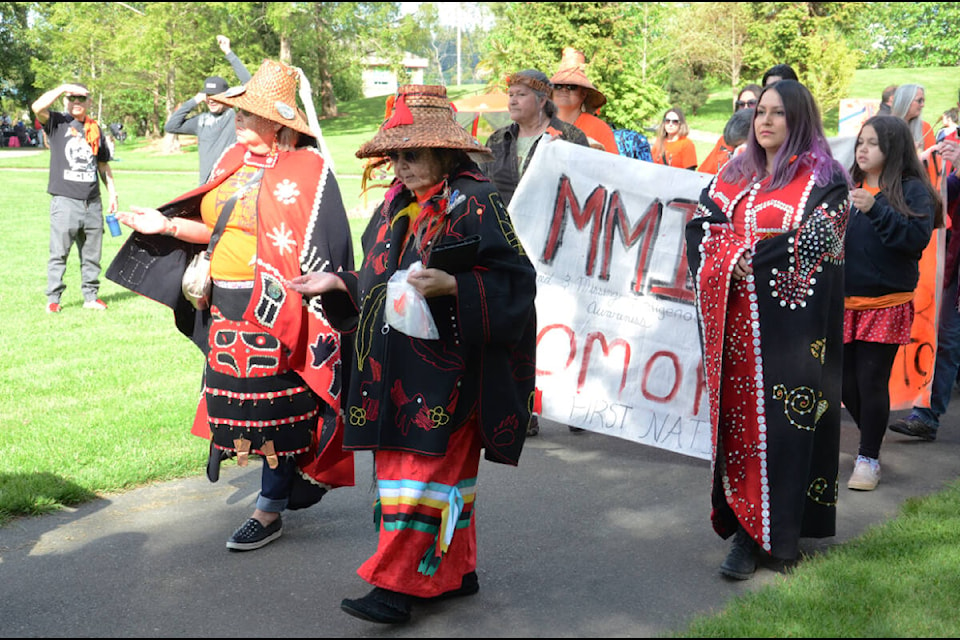One year after the unmarked graves of the first 215 Indigenous children discovered at former residential school sites, too little has changed for too many.
This was the motivation for organizers of a commemorative prayer ceremony and march in Courtenay Friday evening.
“We have known most of our lives that they were there,” said co-organizer Logan Clifford. “It’s such an honour to still be here after everything that’s happened, so we need to respect our survivors and everybody who never made it home.”
To remember these children, about 75 people gathered at Simms Millennium Park to drum, sing and share their stories. Before the event started, there were signs all around the site calling for Truth and Reconciliation action.
RELATED STORY: Valley vigils held to honour the remains of children found at B.C. residential school site
While a few Elders remained behind, most people marched, many in their orange shirts or carrying placards, over the 5th Street bridge to city hall and on to the courthouse. The Elders from K’ómoks First Nation led the procession, followed by drummers and others also playing drums or carrying banners.
“That was really important for us, to follow protocols with the Nation,” said Clifford.
All the way to their destination, they continued to sing and drum, while leaving cedar branches behind. Survivors of residential schools shared their experiences, adding they need to pass on this history to young people in order that it never happen again.
Josie Marie, another one of the organizers, explained the cedar has great significance for Indigenous people on the West Coast, though she stressed the specifics can vary from family to family.
“It’s a tree of life,” she said.
At the same time, Indigenous people from other parts of Canada like the Prairies might use materials such as sage or sweetgrass for ceremonies, she added. On Friday, the cedar was an important part of the process toward healing.
“We take a year to grieve,” she said. “It’s about healing and moving forward.”
Clifford said in the year since the news broke about the children’s graves near Kamloops, there has been little progress toward real reconciliation, but provincial ministry, church and police representatives were invited.
“That’s why we’re trying to put some pressure on,” she said.
Clifford added that ministry people were to be on hand, and members of city council also attended.
mike.chouinard@comoxvalleyrecord.com
Like us on Facebook and follow us on Twitter.
